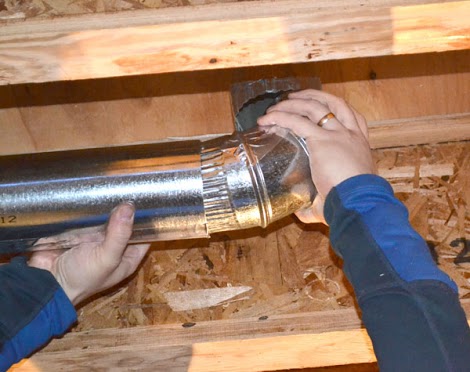Why Normal Upkeep of Dryer Duct San Jose is Crucial
Why Normal Upkeep of Dryer Duct San Jose is Crucial
Blog Article
Tips for Properly Cleansing Your Clothes Dryer Ducts to avoid Fire Threats
Keeping the sanitation of your garments dryer ducts is not merely a matter of efficiency; it is a vital action in fire avoidance. What are the most effective strategies to ensure your dryer continues to be efficient and safe?
Relevance of Cleansing Clothes Dryer Ducts
On a regular basis cleansing clothes dryer ducts is vital for both safety and security and effectiveness in washing operations. Over debris, time and lint build up within the ducts, blocking airflow and increasing the risk of overheating. This buildup not only results in much longer drying out times however can likewise significantly elevate power consumption, resulting in higher energy bills.
When clothes dryer air ducts continue to be uncleaned, the device has to function harder to eliminate moisture from clothing, which can cause premature damage on the dryer itself - dryer duct san jose. In the worst-case circumstance, clogged up air ducts can ignite a fire, posturing significant safety and security hazards to homes and people
In addition, keeping clean clothes dryer ducts adds to a much healthier interior environment. Excess wetness from inefficient drying can bring about mold and mold development, impacting air top quality and possibly creating breathing problems.
Ultimately, regular cleansing of dryer air ducts is a financial investment in both the security of your home and the functional efficiency of your washing home appliances. Establishing a routine cleansing routine, along with professional inspections, can guarantee that your dryer runs efficiently, consequently lengthening its life expectancy and reducing the threat of fire dangers.

Indications of Clogged Ducts
Recognizing the indicators of clogged dryer ducts is essential for preventing security dangers and maintaining appliance performance. Among one of the most famous indicators of a blockage is expanded drying out times. It might show that air can not flow effectively due to lint accumulation. if clothing continually require numerous cycles to come to be dry.
An additional indicator is an overheated dryer. If the exterior of the dryer feels exceedingly warm during operation, it recommends that the duct may be blocked, bring about hazardous problems. Furthermore, a visible increase in dust build-up around the clothes dryer or on apparel after drying out can direct to inadequate airing vent and demands prompt focus.
Undesirable odors, such as a scorched odor, can additionally indicate that the dryer is struggling to eliminate warm air, indicating a prospective fire risk. If the clothes dryer vent hood does not open during procedure, this can suggest that air movement is dramatically limited.
Last but not least, any kind of uncommon sounds-- such as rattling or banging-- can represent that dust or debris is causing obstruction within the duct. Recognizing and addressing these indications at an early stage can help guarantee the reliable and safe operation of your dryer.

Devices Needed for Cleansing
To successfully clean dryer air ducts, having the right devices handy is necessary for making sure a reliable and extensive procedure. The primary device you will need is a dryer vent cleansing brush, which is especially developed to reach right into the ductwork and eliminate lint accumulation. These brushes commonly have a flexible shaft that enables you to browse bends and kips down the duct.
Along with the brush, a vacuum with a hose pipe attachment is indispensable for sucking out loosened dust and particles. A wet/dry vacuum is optimal, as it can manage larger globs of lint effectively. A flashlight can also show beneficial, as it aids illuminate dark areas within the duct, enabling you to examine the degree of the buildup.
For those that prefer a more automated approach, a dryer air vent cleaning package that affixes to a power drill can accelerate the cleansing procedure. dryer duct san jose. Gloves and a dirt mask are recommended to secure your hands and lungs from dirt and irritants. Having these devices easily offered will guarantee that your dryer air duct cleaning is both efficient and safe, reducing the threat of fire threats connected with blockages
Step-by-Step Cleaning Process
Finishing an effective dryer duct cleaning calls for mindful interest to information and adherence to an organized process. Begin by detaching the dryer from its power resource to make certain safety and security throughout the cleansing. Next off, remove the duct from the clothes dryer and the wall vent, making use of a screwdriver if necessary.
As soon as the duct is detached, examine it for any kind of noticeable lint buildup or clogs. Use a vacuum with an appropriate accessory to eliminate loosened debris from both the duct and air vent. For persistent blockages, use a brush specifically designed for clothes dryer air ducts, making certain that you get to deep into the ductwork.
After thoroughly cleaning up the air duct, inspect the vent outside to ensure it is without blockages. Reattach the duct safely to both the clothes dryer and wall air vent, ensuring all connections are limited to avoid leaks. Plug the dryer back discover here in, and execute a test run to make certain correct airflow and capability. By following this step-by-step procedure, you will dramatically decrease the risk of fire risks connected with stopped up clothes dryer air ducts, advertising a safer washing setting.

Preventive Upkeep Tips
Keeping your clothes dryer ducts is vital to avoid costly repair services and make sure ideal efficiency. Normal precautionary upkeep can dramatically decrease the danger of fire threats and enhance energy effectiveness.
First, check your clothes dryer ducts month-to-month for any type of noticeable dust buildup or damage. Schedule a detailed cleaning if you see a buildup of dust. In addition, consider using a dust trap with an incorporated filter to record even more lint before it gets in the ducts.
Next, guarantee that the airing vent system is properly set up and without kinks or bends that can hamper air flow. Straight, unhampered ductwork permits reliable procedure and lessens the threat of lint buildup.
Every six months, take into consideration working with an expert service to carry out a comprehensive cleaning of your clothes dryer air ducts. Specialists have specialized tools and competence to eliminate surprise lint and debris that can present serious fire dangers.
Last but not least, constantly review and follow the producer's guidelines for both your clothes dryer and the venting system. Adhering to these guidelines can aid extend the life of your device and guarantee it runs securely straight from the source and efficiently. Routine precautionary maintenance is essential to a reliable and safe laundry environment.
Final Thought

Having these devices easily available will ensure that your dryer duct cleaning is both effective and secure, minimizing the risk of fire threats connected with clogs.
Finishing a successful dryer duct cleansing calls for cautious focus to detail and adherence to an organized process. Reattach the duct safely to both the clothes dryer and wall surface air vent, guaranteeing all connections are limited to stop leaks. dryer duct san jose.First, evaluate your clothes dryer ducts monthly for any kind of noticeable dust accumulation or Recommended Site damages.Routine cleaning of garments dryer air ducts is essential for fire danger avoidance and optimal appliance performance
Report this page